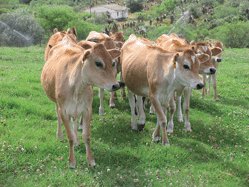Chromium can act either as an essential micronutrient or a chemical carcinogen, depending on its oxidation state. Of the two most stable chromium oxidation states, Cr(VI) is a known carcinogen, while Cr(III) is an essential element. Determination of total Cr cannot therefore be used to evaluate food safety of dairy products, as speciation is required for accurate assessment of potential toxicity. In this study, total Cr was determined by DRC-ICP-MS after mineralisation of freeze-dried milk samples. Chromabond NH2ion-exchange columns were used to separate Cr(VI) from Cr(III). During the separation process, Cr(VI) was selectively adsorbed onto the Chromabond NH2 column. The retained Cr(VI) was subsequently eluted with two column volumes of 2 M HNO3 and diluted to a final volume of 10 mL. After separation, the Cr(VI) was quantified by DRC-ICP-MS, using O2 as the reactive gas, to alleviate polyatomic ion interference. An O2 gas flow rate of 0.85 ml/min and a high-pass rejection parameter q (Rpq) = 0.5, provided the best compromise signal-to-noise ratio. The method was validated through determining the recovery in milk samples spiked with Cr(VI). The recoveries were quantitative and ranged from 96.4 to 99.2%. A whole milk powder reference material (NIST SRM 8435) was used to evaluate the accuracy of the total Cr quantification method. The observed value showed concordance with the certified value. The limits of detection (LOD) were 0.091 and 0.085 µg/L for total Cr and Cr(VI), respectively. These findings are important for the determination of maximum residue levels (MRLs) of Cr(VI) in dairy products.

You have access to this article
 Please wait while we load your content...
Something went wrong. Try again?
Please wait while we load your content...
Something went wrong. Try again?


 Please wait while we load your content...
Please wait while we load your content...